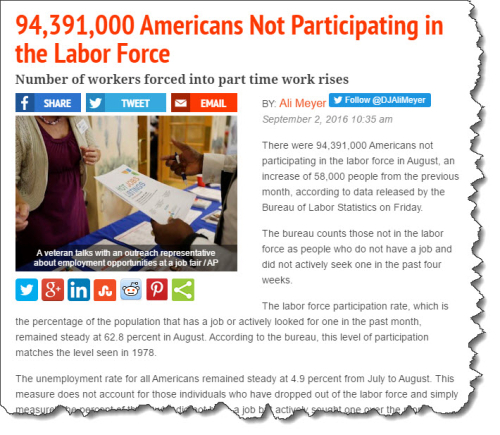Almost 95 Million Americans Not Participating in Labor Force
If you have a real interest with respect to what���s going on in the economy, but don���t pay attention to something called the labor force participation rate (LFPR), you may need to change up how you look at things.
Most casual observers, when it comes to employment numbers, principally focus on the unemployment rate. Unfortunately, those numbers in a country increasingly characterized by underemployed workers���those who are plugging away at various combinations of part-time jobs, or working at full-time jobs well beneath their credentials and experience, or who gave up looking for traditional work and now try to eke out a living as a part of the ���gig��� economy���just don���t tell the real story.
The labor force participation number is awfully telling, however. The rate represents the number of Americans who are either working, or are actively looking for work. Well, in reporting by The Washington Free Beacon, the Bureau of Labor Statistics released data on Friday that revealed there were 94,391,000 American citizens who did not participate in the labor force in August, yielding an LFPR of 62.8 percent, the lowest it has been since 1978.
Commenting on the significance of the LFPR, Ed Rensi, the former CEO of McDonald���s and Famous Dave���s, said, ���To get a true indication of the economy you have to dig past the topline number of today���s jobs report to see the historically low labor force participation rate���including the low labor force participation of prime age workers. When you do that you see that the economy is still not providing opportunity for everyone, something that policymakers must address by reducing the tax and regulatory burdens on small businesses.���
By Robert G. Yetman, Jr. Editor At Large




